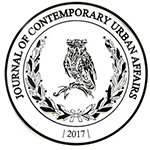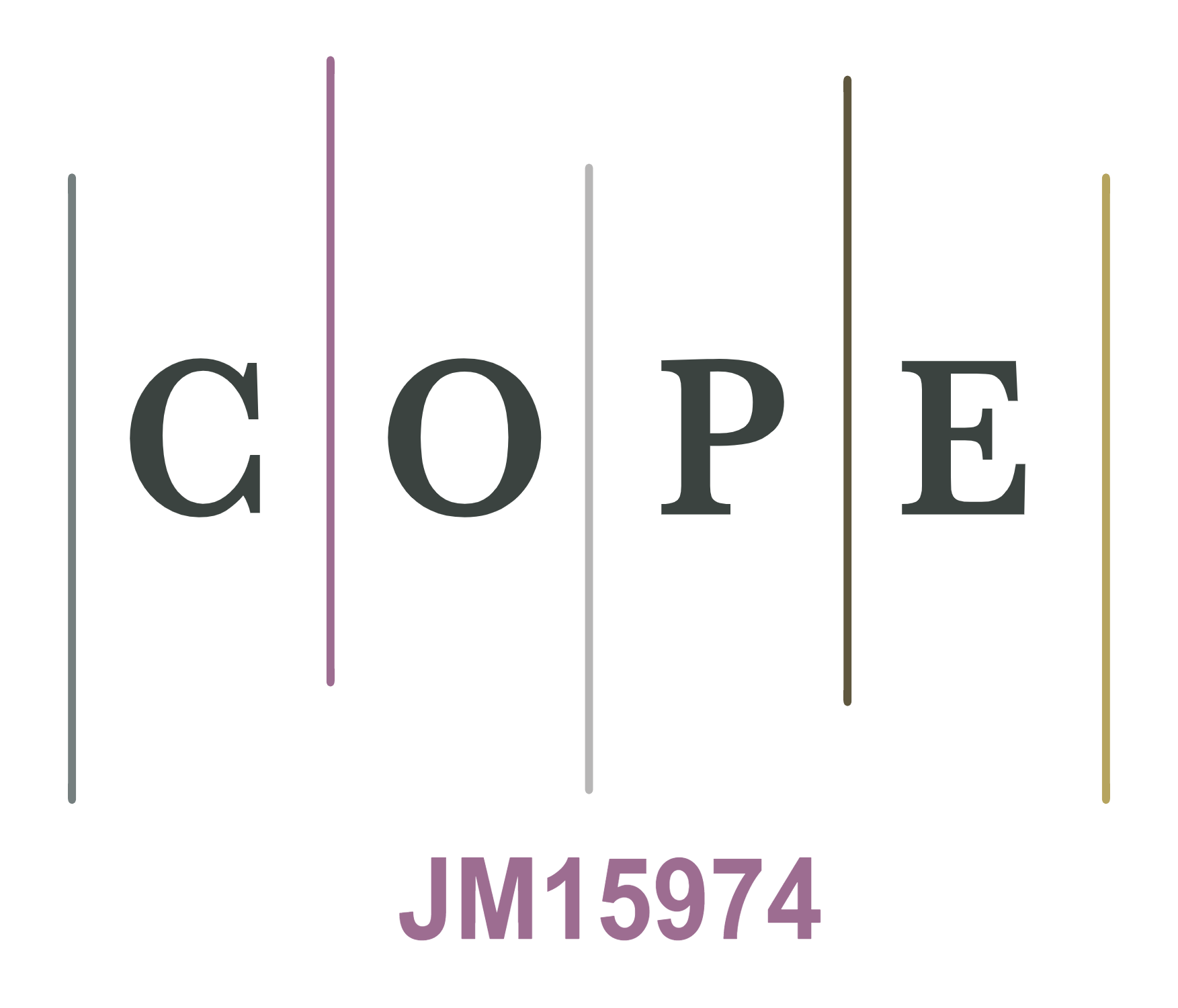Understanding Aesthetic Experiences of Architectural Students in Vertical and Horizontal Campuses: A Comprehensive Approach
DOI:
https://doi.org/10.25034/ijcua.2020.v4n2-2Keywords:
Architectural Design, Urban Aesthetics, University Campus, Cognitive Studies, Photo-Projective MethodAbstract
The typological features of university campus areas are shaped according to their locations in the city. Campuses in city centres carry great potential for students’ cultural, intellectual and artistic activities, especially for those from the faculty of architecture and design, with close relations to the city. On the other hand, campuses built on the periphery mainly feature horizontal planning characteristics due to the availability of land. The aim of this paper is to develop an approach for measuring architecture students’ aesthetic experience of vertical and horizontal campuses in relation to the sense of place theory. In this exploratory research, using the ‘photo-projective method’, students will be asked to interpret and draw ‘cognitive maps of the places that they are happy to be (defined place) or to see (landscape) on the campus. Based on students’ impressions and experiences, it will be possible to compare aesthetic experiences on vertical and horizontal campuses. Thus, a comprehensive approach for improving campus design according to users’ aesthetic experiences and sense of place rather than building technology, law, development and finance-driven obligations will be introduced.
Downloads
References
Ahmad Nia, H., & Atun, R. A. (2016). Aesthetic design thinking model for urban environments: A survey based on a review of the literature. URBAN DESIGN International, 21(3), 195-212. https://doi.org/10.1057/udi.2015.25
Altman, I., & Low, S. M. (Eds.). (1992). Place Attachment. Springer US. https://doi.org/10.1007/978-1-4684-8753-4.
Bergin, C., & Bergin, D. (2009). Attachment in the classroom. Educational psychology review, 21, 141-170. https://doi.org/10.1007/s10648-009-9104-0
Berlyne, D. E. (1974). Studies in the new experimental aesthetics: Steps toward an objective psychology of aesthetic appreciation. Hemisphere.
Bradley, M. M., & Lang, P. J. (1994). Measuring emotion: The self-assessment manikin and the semantic differential. Journal of Behavior Therapy and Experimental Psychiatry, 25(1), 49-59. https:/doi.org/10.1016/0005-7916(94)90063-9
Brehm, J. M., Eisenhauer, B. W., & Stedman, R. C. (2013). Environmental Concern: Examining the Role of Place Meaning and Place Attachment. Society & Natural Resources, 26(5), 522-538. https://doi.org/10.1080/08941920.2012.715726
Carmona, M., Heath, T., Tiesdell, S., & Oc, T. (2010). Public Places, Urban Spaces: The Dimensions of Urban Design. Architectural Press.
Chow, K., & Healey, M. (2008). Place attachment and place identity: First-year undergraduates making the transition from home to university. Journal of Environmental Psychology, 28(4), 362-372. https:/doi.org/10.1016/j.jenvp.2008.02.011
Collier, J., & Malcolm Collier, J. C. (1986). Visual Anthropology: Photography as a Research Method. University of New Mexico Press.
Dennis, S. F., Gaulocher, S., Carpiano, R. M., & Brown, D. (2009). Participatory photo mapping (PPM): Exploring an integrated method for health and place research with young people. Health & Place, 15(2), 466-473. https:/doi.org/10.1016/j.healthplace.2008.08.004
Erçevik, B., & Önal, F. (2011). Üniversite Kampüs Sistemlerinde Sosyal Mekan Kullanımları [Use of social space in university campus systems]. Megaron Journal, 6(3), 151-161. https://jag.journalagent.com/megaron/pdfs/MEGARON_6_3_151_161.pdf
Garrod, B. (2008). Exploring place perception a photo-based analysis. Annals of Tourism Research, 35(2), 381-401. https:/doi.org/10.1016/j.annals.2007.09.004
Groesbeck, C. L., DeVries, J. B., Klemencic, R., & McDonald, J. F. (2012). role of tall buildings in future urban universities. Architecture + Design, 29(9), 94-96,98,100-101. https://search.proquest.com/docview/1115594534?pq-origsite=gscholar&fromopenview=true#
Jorgensen, B. S., & Stedman, R. C. (2001). SENSE OF PLACE AS AN ATTITUDE: LAKESHORE OWNERS ATTITUDES TOWARD THEIR PROPERTIES. Journal of Environmental Psychology, 21(3), 233-248. https:/doi.org/10.1006/jevp.2001.0226
Kaplan, K. J. (1972). On the ambivalence-indifference problem in attitude theory and measurement: A suggested modification of the semantic differential technique. Psychological bulletin, 77(5), 361-372. https://doi.org/10.1037/h0032590
Lloyd, R., & Heivly, C. (1987). Systematic Distortions in Urban Cognitive Maps. Annals of the Association of American Geographers, 77(2), 191-207. https://doi.org/10.1111/j.1467-8306.1987.tb00153.x
Lynch, K. (1960). The Image of the City. MIT Press.
Manzo, L. C. (2005). For better or worse: Exploring multiple dimensions of place meaning. Journal of Environmental Psychology, 25(1), 67-86. https:/doi.org/10.1016/j.jenvp.2005.01.002
Masterson, V. A., Stedman, R. C., Enqvist, J., Tengö, M., Giusti, M., Wahl, D., & Svedin, U. (2017). The contribution of sense of place to social-ecological systems research: a review and research agenda. Ecology and Society, 22(1), 49. https://doi.org/10.5751/ES-08872-220149
Moore, G., Croxford, B., Adams, M., Refaee, M., Cox, T., & Sharples, S. (2008). The photo‐survey research method: capturing life in the city. Visual Studies, 23(1), 50-62. https://doi.org/10.1080/14725860801908536
Murat, Ö. (Ed.). (2019). New Approaches to Spatial Planning and Design. Peter Lang. https://doi.org/10.3726/b15609.
Northcote, M. (2008). Sense of place in online learning environments. Proceedings ascilite Melbourne, 676-684. https://www.ascilite.org/conferences/melbourne08/procs/northcote.pdf
Osterman, K. F. (2000). Students' Need for Belonging in the School Community. Review of Educational Research, 70(3), 323-367. https://doi.org/10.3102/00346543070003323
Pringle, S., & Guaralda, M. (2018). Images of urban happiness: A pilot study in the self-representation of happiness in urban spaces. The International Journal of the Image, 8(4), 97-122. https://doi.org/10.18848/2154-8560/CGP/v08i04/97-122
Proshansky, H. M. (1978). The City and Self-Identity. Environment and Behavior, 10(2), 147-169. https://doi.org/10.1177/0013916578102002
Qingjiu, S., & Maliki, N. Z. (2013, 2013/10/10/). Place Attachment and Place Identity: Undergraduate Students’ Place Bonding on Campus PSU-USM International Conference on Humanities and Social Sciences,
Sargent, K. (2016). The Challenge And Promise Of The Vertical Campus. Work Design Magazine. https://www.workdesign.com/2016/01/the-challenge-and-promise-of-the-vertical-campus/
Stokols, D., Shumaker, S.A. . (1981). People in places: A transactional view of settings.
Sturner, W. F. (1972). Environmental Code: Creating a Sense of Place on the College Campus. The Journal of Higher Education, 43(2), 97-109. https://doi.org/10.2307/1980367
Sugimoto, K. (2014). Visualizing the Sightseeing Potential of Urban Recreational Spaces: A Study of Weighted Scores on the Density Estimation of Points of Visual Interest. Geographical review of Japan series B, 86(2), 189-197. https://doi.org/10.4157/geogrevjapanb.86.189
Tidball, K., & Stedman, R. (2013). Positive dependency and virtuous cycles: From resource dependence to resilience in urban social-ecological systems. Ecological Economics, 86, 292-299. https:/doi.org/10.1016/j.ecolecon.2012.10.004
Tobiasz-Lis, P., & Wójcik, M. (2013). Evaluating and interpreting the city using a photo projective method. The example of Łódź. Geographia Polonica, 86(2), 137-152. https://doi.org/10.7163/GPol.2013.14
Tolman, E. C. (1948). Cognitive maps in rats and men. Psychological review, 55(4), 189-208. https://doi.org/10.1037/h0061626
Tuan, Y. F. (1977). Space and Place: The Perspective of Experience. E. Arnold.
van Riel, K., & Salama, A. M. (2019). Using auto-photography to explore young people's belonging and exclusion in urban spaces in Accra, Ghana. Open House International, 44(1), 62-70. https://doi.org/10.1108/OHI-01-2019-B0008
Yamashita, S. (2002). Perception and evaluation of water in landscape: use of Photo-Projective Method to compare child and adult residents’ perceptions of a Japanese river environment. Landscape and Urban Planning, 62(1), 3-17. https:/doi.org/10.1016/S0169-2046(02)00093-2
Published
How to Cite
Issue
Section
License
Copyright (c) 2020 Journal of Contemporary Urban Affairs

This work is licensed under a Creative Commons Attribution-NonCommercial-NoDerivatives 4.0 International License.

















